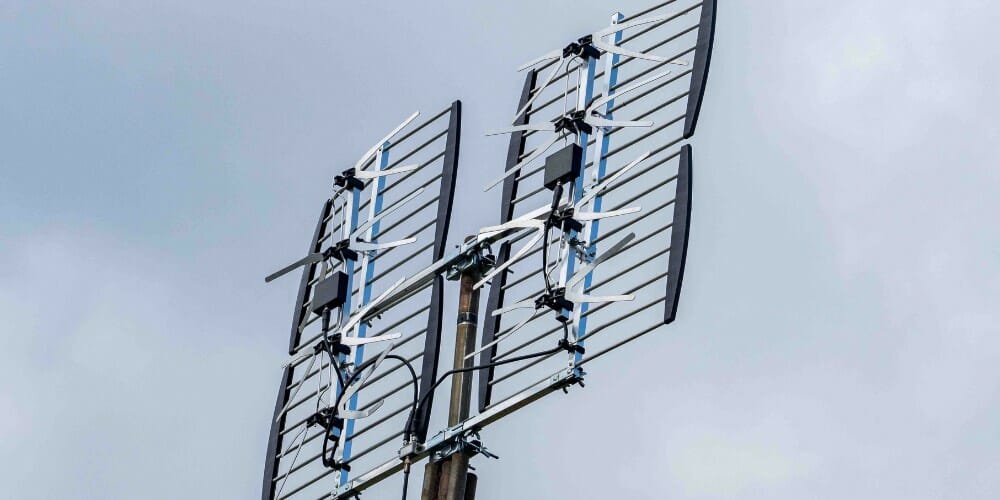Antennas are often directional, meaning that they receive or broadcast more signals in one direction than the other. The frequency of the antenna determines the power of the television’s signal, which impacts where you place it. The antenna alignment must be pointed in the proper direction to provide the highest possible performance.
In general, the first thing you should do to determine which end is the front of a television antenna is to determine what type of antenna you are using. After that, you will know where to look to find out which part is a television antenna’s front part.
There are different types of antennas which indicate that there are also different components. If you are wondering which part you should look at, let me walk you through this guide.
Types of Antennas and Its Front End
Written below are the different types of antennas and where their designated front end is located:
1. Front End: Panel Antenna
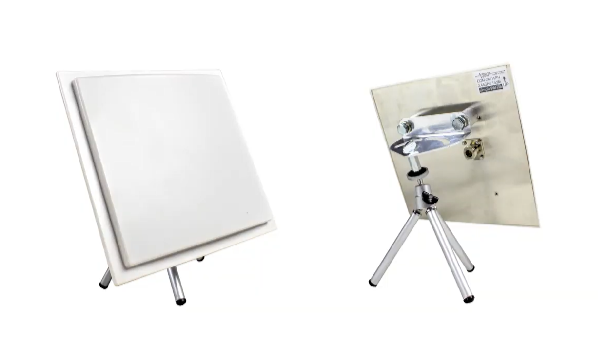
The panel antenna is just a covered variant of the classic modern antenna with multiple poles. This type of antenna does not require any front and back specifications because one side clearly shows where we will put it, and the panel area faces the front.
2. Front End: Yagi Antenna
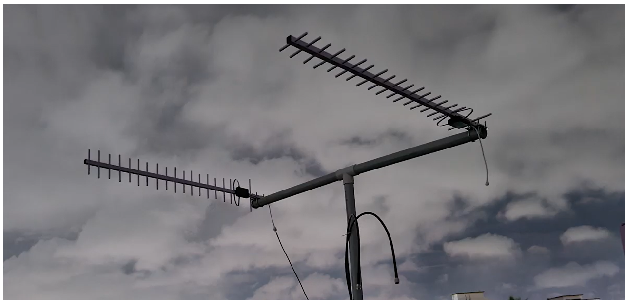
When it comes to antennas, one of the first that comes to mind is the Yagi-style antenna. The Japanese creators gave the name Yagi-Uda to the equipment. Its input is concentrated in one direction which makes the Yagi-style antenna good at receiving low-power signals. This gives it a good bandwidth and, as a result, a high-frequency reception. Noise tends to come from the opposite direction of the antenna, but the Yagi antenna helps to filter it out.
With this antenna, check for the narrowest point, which will be at the front. The longest pieces (the horizontal poles) will be at the back. Another way of knowing whether you are pointing it right is to check the top and bottom and should point toward the front.
3. Front End: Planar Antenna
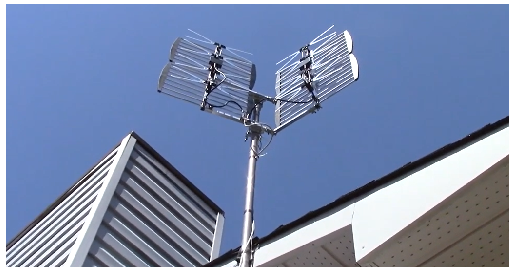
One of the recently created antennas is the Planar Antenna. It is widely recognized for its huge bandwidth, which assists powerful transmissions even for RF, and a notable benefit is that its assembly and processing costs are pretty low. (1)
The planar antenna is just as simple as the bowtie antenna point. The dish is directed toward the front, while the installation portion is angled toward the back.
4. Front End: Bowtie Antenna
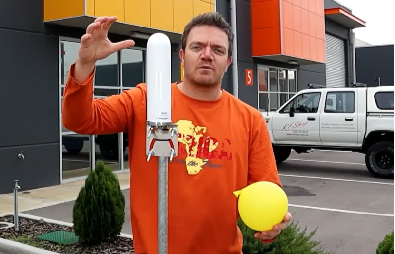
The receiving element can be in the form of a circle, an “X,” or a bowtie. There are also horizontal bars that act as reflectors, reflecting signals to the antenna point. The horizontal bars are always placed in the back. That’s the easiest way to know you have this aimed right.
This type of antenna will be forgiving in terms of targeting, but consider the antenna alignment of the receiving element with the tower you’re pointing at if you want a perfect aim. Unfortunately, showing this on a 2D screen is difficult.
5. Front End: Omni Antenna
Omni antennas are among the simplest to put up. The term ‘Omni’ denotes that the antenna is omnidirectional, and there is no need for considerable stress in placing because its frequency is easily obtained. You just have to attach the antenna and point it upward.
Ways to Boost your Antenna Signal
Outdoor antennas should be set as high as possible in the best-receiving region. You might be able to determine the direction of your neighbor’s antenna by looking at their outdoor antennas and utilizing that information to figure out where they point their antenna. You may also hover over mapping applications and antenna direction indicators to check where your local air systems are located.
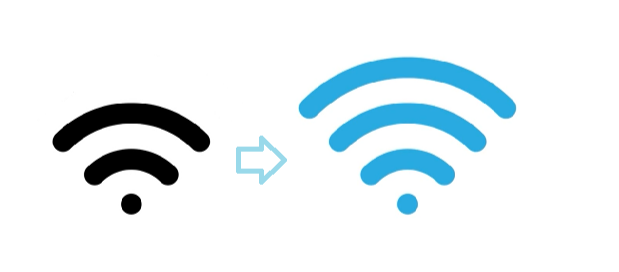
The indoor antennas are determined by the layout of your building and the area to be covered. If you only want to increase the signal in one room, you should place or adjust the antenna in the center of the ceiling. A directional adjust antenna is required if you wish the improved signal strength to penetrate many floors. In some unique room layouts, a directional panel antenna on the walls of a long narrow hallway may be the best option. (2)
Interference: Effects on Signal
Metal is a renowned signal disruptor. If your antenna is on your roof and your chimney is metal, you may need to find a location away from the chimney or other metal on your roof, such as ceiling flashing or solar panels. Hills, significant buildings, shiny surfaces, streetlamps, trees, and neighboring residences can cause interference.
When checking signal strength, consider that individuals standing near the antenna might generate interference. Other devices can cause interference with indoor antennas, so keep the antenna away from televisions, laptops, gaming consoles, appliances, and other electromagnetic sources.
Take a look at some of our related articles below.
- What is the difference between directional and omnidirectional antenna
- What is the best TV antenna signal booster
- How to get better TV reception with outdoor antenna
References
(1) bandwidth – https://www.techtarget.com/searchnetworking/definition/bandwidth
(2) ceiling – https://www.housebeautiful.com/home-remodeling/interior-designers/g27275930/ceiling-types/

